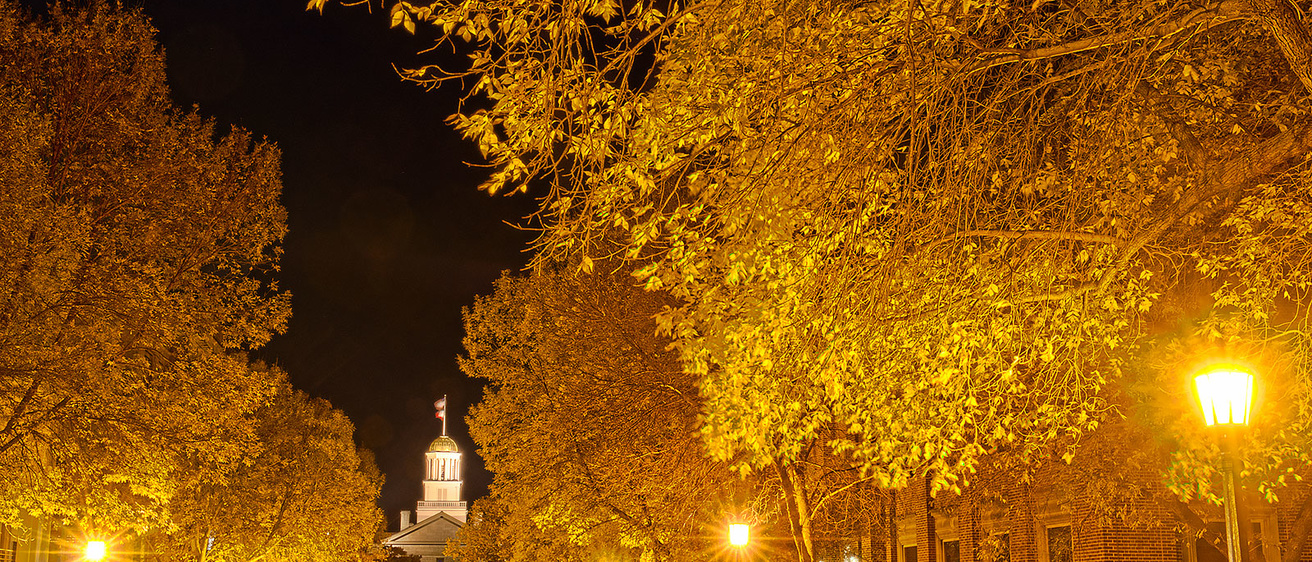The emerald ash borer that’s killed millions of ash trees around the country has made its way to the University of Iowa.
A larva of the invasive emerald-green pest was collected from an ash tree in Gibson Square, just south of the Main Library, during a routine check of campus ash trees on Feb. 1. It is the first in Johnson County, making it the 30th county in Iowa to have a confirmed emerald ash borer presence.
State, local, and campus arborists have been checking campus ash trees since 2011, when the university developed an emerald ash borer management policy. No trace of the borer had been found, but last week’s discovery means it’s likely that other trees have been attacked already—many, if not all, of the approximately 560 ash trees on campus will need to be removed in the next three to five years.
The metallic-green emerald ash borer was first discovered in North America in Michigan in 2002 and has now been detected in more than half of U.S. states. The adult female lays her eggs inside the tree, and the larvae feed on the inner bark, disrupting the tree’s ability to transport water and nutrients and killing the tree within two to four years. An infected tree must be removed soon after it dies because the wood will lose its structural integrity and begin to fall apart, posing a hazard to pedestrians and property.
Fortunately, ash trees make up a small percentage of the university’s tree inventory—only about 7 percent—so even in a worst-case scenario, 93 percent of the campus’ shade trees will survive. Scott Gritsch, landscape manager in UI Facilities Management, says a new ash tree hasn’t been planted on campus in more than 10 years. Instead, about 300 new trees of varying species are planted each year to increase the campus’ tree biodiversity and keep future infestations from causing too many casualties.
As a result, the loss of infected ash trees will have a minimal visible impact on the broader campus. But areas where ash trees are heavily concentrated, such as the T. Anne Cleary Walkway, the west end of Iowa Avenue, and along Washington and Market streets, all of which are shaded by canopies of mature ash trees, will be noticeably impacted.
Gritsch says the discovery was not a surprise, given that the borer has been found in neighboring counties.
As the infected trees are removed, the university’s facilities management department will explore opportunities to partner with the city of Iowa City to find a storage facility for the removed trees and work with the university’s utilities and energy management staff to use the wood to generate power for the university. The main Power Plant began burning wood chips in 2013 after a harvest of dead and dying non-native conifer trees at Kent Park.
This is not the first time an infestation has damaged the university’s shade tree population. At one time, more than 2,000 American elm trees shaded the campus, 100 of them on the Pentacrest alone. But those numbers were ravaged by Dutch elm disease in the 1960s and 1970s, and today only two elm remain.
Gritsch says the university will continue to diversify the species of trees on campus to avoid creating a monoculture and repeating destruction like that caused by the ash borer or Dutch elm disease, lessening the impact on the campus landscape. That diversification plan, among others, resulted in the UI receiving Iowa’s first Tree Campus USA designation in 2009
